You’ll prevent nylon moisture issues by storing filament in vacuum-sealed bags with silica gel desiccants, maintaining storage humidity below 20% using hygrometers, and choosing moisture-resistant variants like PA12. Dry wet filament at 75-120°C for 8-12 hours, increase extruder temperature by 5-10°C during printing, and reduce print speeds by 20-30%. Create enclosed printing environments with desiccants, monitor for bubbling or hissing sounds, and establish consistent moisture control workflows. These foundational strategies reveal advanced techniques that’ll transform your nylon printing success.
Understanding Nylon’s Hygroscopic Nature and Critical Moisture Thresholds
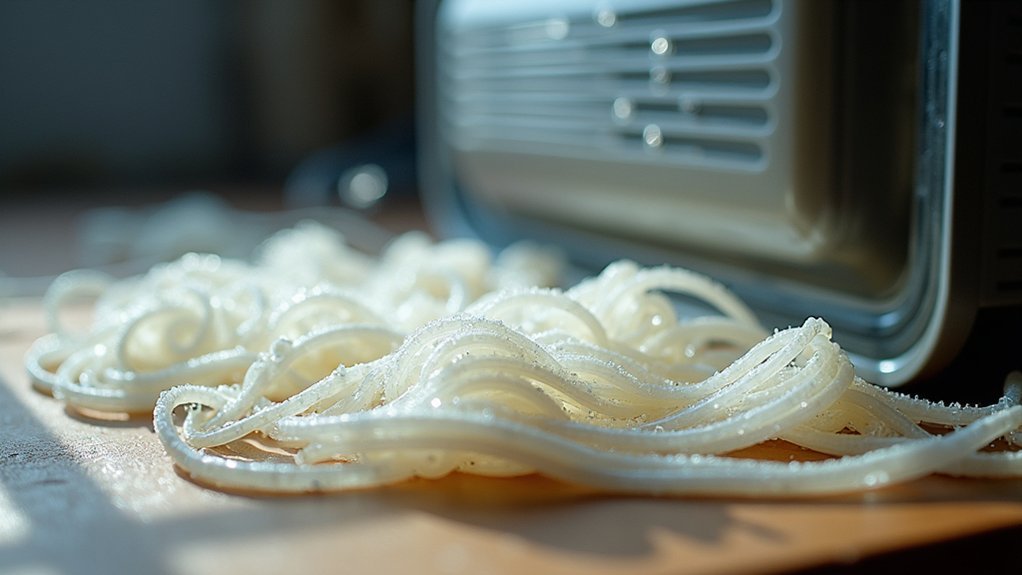
Although nylon filament offers exceptional strength and versatility for 3D printing, its hygroscopic nature creates significant moisture management challenges that can derail even the most carefully planned projects.
Nylon’s moisture-absorbing properties can quickly sabotage your 3D printing projects without proper filament storage and handling precautions.
You’ll find that nylon readily absorbs moisture from ambient air, soaking up over 10% of its weight in water within 24 hours when exposed to humidity. This happens remarkably fast—your dry filament can reach critical moisture levels in just 2 to 8 hours depending on conditions.
Here’s what you need to know: visual defects start appearing at moisture content as low as 0.5 weight percent, becoming distinctly noticeable at 0.75%.
Beyond 1% moisture content, you’ll face severe print failures including bubbling and delamination that’ll ruin your projects. You can prevent moisture-related warping by maintaining proper drying conditions throughout your printing process.
Recognizing Early Signs of Moisture-Damaged Nylon Filament
How can you tell when your nylon filament has already absorbed too much moisture? Watch for these telltale symptoms during printing that indicate your filament needs immediate attention.
| Visual Signs | Audio/Physical Cues | Print Quality Issues |
|---|---|---|
| Bubbling filament | Hissing sounds | Stringing between parts |
| Vapor during extrusion | Popping noises | Irregular layer adhesion |
| Swollen filament diameter | Crackling sounds | Weak structural integrity |
| Steam from hotend | Filament breaking | Poor surface finish |
You’ll notice these problems become apparent at moisture levels as low as 0.5%, with defects becoming increasingly noticeable at 0.75% moisture content. Don’t ignore early warning signs—moisture-damaged nylon can also cause nozzle clogging from hardened plastic residue and abrasive buildup on your print bed, requiring costly maintenance.
Keep in mind that even newly opened spools often contain sufficient moisture to cause printing defects, making pre-print inspection crucial regardless of packaging freshness.
Implementing Proper Airtight Storage Solutions With Desiccants
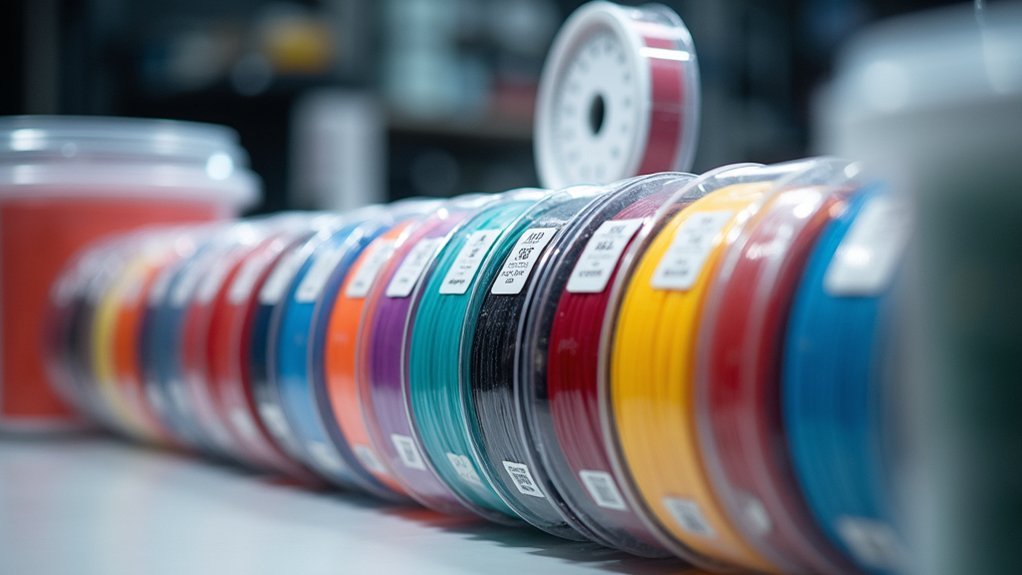
Once you’ve identified moisture damage in your nylon filament, prevention becomes your top priority.
Prevention becomes your top priority once moisture damage infiltrates your nylon filament storage system.
You’ll need airtight storage solutions that completely block humid air entry. Vacuum-sealed bags work excellently by removing air and moisture exposure, while airtight plastic bins with secure lids provide reliable protection. You can also repurpose food storage containers for smaller quantities.
Don’t forget desiccants – they’re essential for maintaining dryness. Silica gel packets absorb moisture effectively, though you can consider alternatives like calcium chloride.
Replace saturated desiccants regularly to maintain effectiveness. Monitor humidity levels with a hygrometer, aiming for 10-20% inside your containers. Keeping humidity below 40% is crucial for maintaining nylon filament quality and preventing moisture-related printing problems.
For long-term storage, heated dry boxes offer superior environmental control, especially in naturally humid conditions.
Mastering Effective Drying Techniques and Temperature Controls
When moisture has already compromised your nylon filament, you’ll need to master precise drying techniques to restore its printability.
Start with temperatures between 75°C to 120°C depending on your equipment and time constraints. For quick results, use 120°C in a convection oven for 12 hours, while 75-90°C works better for longer 8-24 hour sessions to prevent deformation. Nylon is highly hygroscopic and requires thorough drying compared to other materials.
Choose your drying method wisely:
- Filament dryers – Circulate warm, dry air with stable temperature control
- Food dehydrators – Provide moderate heat and consistent airflow for gentle drying
- Vacuum chambers – Accelerate moisture removal through negative pressure after baking
- Multi-step cycles – Combine baking, vacuum treatment, and dry storage for superior results
Choosing Less Moisture-Sensitive Nylon Variants for Your Projects
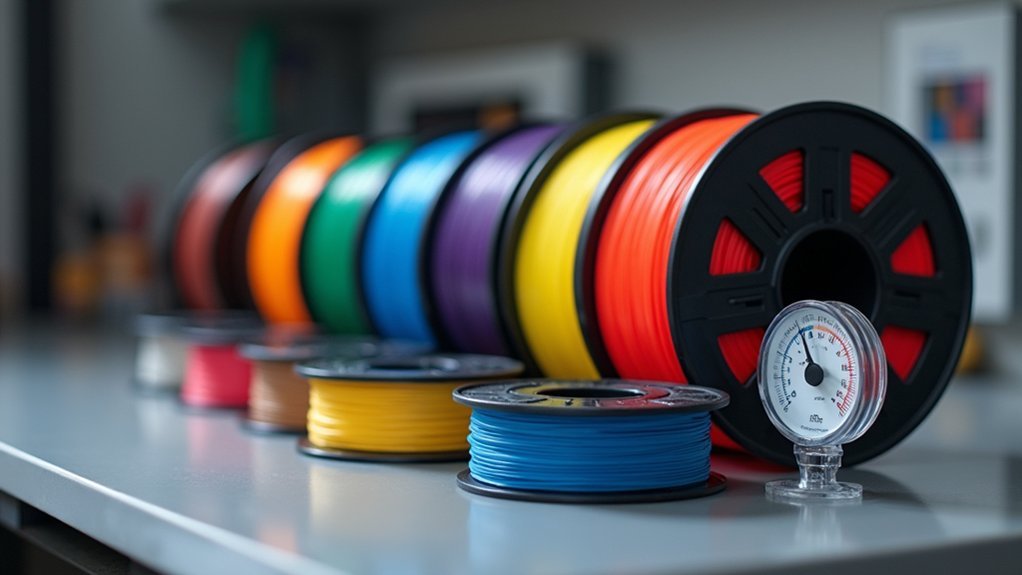
When selecting nylon filaments for your FDM projects, you’ll find that PA12 offers better moisture resistance compared to PA6 and PA66 variants.
This general-purpose material maintains more stable printing characteristics even with slight moisture exposure, making it ideal for prototyping enclosures and tooling applications.
You can also explore additive-enhanced nylon formulations that manufacturers have specifically designed to reduce moisture sensitivity effects, though these specialized variants may come at a premium cost. Many professional users rely on comprehensive material property databases to make informed decisions about filament selection for their specific applications.
PA12 Moisture Resistance
While most nylon variants struggle with moisture absorption that leads to dimensional changes and processing headaches, PA12 stands out as a game-changer for your moisture-sensitive projects.
You’ll find that PA12 absorbs considerably less water than PA6 or PA66, maintaining its dimensional stability even in humid environments. This low moisture absorption means you won’t face the same mechanical property degradation that plagues other nylon variants when exposed to moisture. The material also offers enhanced clarity compared to other nylon variants, making it ideal for applications where both performance and visual appeal matter.
- Superior dimensional stability – maintains shape integrity in moist conditions unlike PA6/PA66
- Simplified processing – requires less pre-drying time, streamlining your workflow
- Retained mechanical properties – keeps strength and flexibility even in humid environments
- Outdoor application ready – excellent choice for projects exposed to weather and moisture
Additive-Enhanced Nylon Options
Beyond choosing moisture-resistant base polymers, you can markedly improve your nylon printing experience by selecting filaments enhanced with specialized additives.
Glass and carbon fiber reinforcements dramatically increase mechanical strength while reducing moisture-related dimensional instability. These reinforced variants maintain superior surface finish and print reliability by minimizing bubbling and fogging defects.
Look for filaments with lubricants and stabilizers that reduce hygroscopicity and improve flow properties.
Modified nylons blended with less hygroscopic polymers absorb moisture more slowly than pure variants. You’ll find that additive-enhanced filaments require higher extrusion temperatures but deliver improved bonding and flow characteristics.
These specialized formulations reduce extreme drying requirements and show fewer signs of stringing or surface defects, making them ideal for demanding industrial applications. NylonG filament incorporates chopped glass fibers that provide 33% more impact resistance than other reinforced variants while maintaining excellent moisture tolerance.
Optimizing Print Settings to Compensate for Residual Moisture
When your nylon filament still contains residual moisture despite your best storage efforts, you can adjust your print settings to minimize defects.
Start by increasing your extruder temperature by 5-10°C to help vaporize trapped moisture, but don’t exceed the filament’s maximum temperature rating to avoid degradation.
You’ll also want to reduce your print speed by 20-30% to improve layer adhesion and give moisture more time to escape during extrusion. Consider using an enclosure to maintain consistent ambient temperatures and further reduce moisture-related warping issues.
Adjust Temperature Parameters
Even after thorough drying, nylon filaments can retain trace amounts of moisture that affect print quality.
You’ll need to adjust your temperature parameters to compensate for these residual moisture effects.
Start by increasing your nozzle temperature to 250°C-280°C within nylon’s ideal range. Higher temperatures help rapidly extrude filament, reducing time for moisture-induced defects to occur.
Set your bed temperature between 40°C-110°C depending on your specific nylon type and adhesion requirements. Consider that wet filament causes air bubbles, weakens parts, and ruins surface finish, while dry nylon prints smoothly with a glossy finish.
Key temperature adjustments for moisture compensation:
- Increase nozzle temperature by 10-20°C above standard settings to combat moisture effects
- Maintain bed temperatures at 80°C or higher for nylons with additives
- Use heated enclosures at 45°C to guarantee consistent chamber conditions
- Monitor first-layer adhesion and adjust bed temperature accordingly for ideal bonding
Modify Print Speeds
Print speed adjustments work hand-in-hand with temperature modifications to combat residual moisture effects in nylon filaments. When you’re dealing with moisture levels above 0.5 w%, reducing print speeds can help minimize defects like popping and cracking during extrusion.
Slower speeds give the filament less time in a moist environment, reducing the opportunity for steam formation that causes these issues.
Different nylon materials have varying moisture sensitivity, so you’ll need to adjust speeds accordingly. PA12-CF10, for example, requires less aggressive speed modifications than standard nylon variants. This carbon-fiber reinforced nylon demonstrates less change in properties when wet compared to PA6/66 materials.
While maintaining a dry environment remains essential, strategic speed reductions serve as an effective backup when you’re working with filament that hasn’t been completely dried or when residual moisture persists despite proper storage protocols.
Creating Low-Humidity Printing Environments With Enclosures
Since nylon filament readily absorbs moisture from the air, you’ll need to create a controlled low-humidity environment using an enclosure system.
Design your enclosure to maintain humidity levels below 20% for ideal nylon printing. You’ll want to include desiccants inside the enclosure to actively absorb moisture from the air.
Install a hygrometer to monitor humidity levels continuously, ensuring they stay within the critical range.
Proper seal integrity prevents external moisture from entering your controlled environment. Choose enclosure materials that resist moisture retention while maintaining consistent temperatures. Moisture absorption can compromise the mechanical properties of your nylon filament, leading to weakened prints and poor layer adhesion.
Store your nylon filaments in airtight containers with additional desiccants when not actively printing.
- Use silica gel or calcium chloride desiccants for effective moisture absorption
- Install rubber gaskets around enclosure openings for airtight sealing
- Position hygrometers at multiple locations for accurate humidity readings
- Replace desiccants regularly to maintain their moisture-absorbing effectiveness
Establishing a Moisture Control Workflow for Consistent Results
While creating a low-humidity environment is essential, you’ll achieve the most consistent nylon printing results by implementing a thorough moisture control workflow that covers every stage from storage to completion.
Start by storing filament in vacuum-sealed bags with desiccant packets or heated dry boxes with continuous humidity monitoring.
During handling, use dry tools and minimize air exposure by feeding directly from sealed containers to your printer.
Before each print session, conduct visual inspections to identify moisture-induced defects in the filament. If moisture is detected, use a filament dryer at 70-80°C for 6-12 hours to restore optimal printing conditions.
Monitor for audible popping or cracking sounds during printing, which indicate moisture absorption.
Choose nylon materials with lower moisture sensitivity when possible, and regularly check humidity levels in your storage containers to maintain ideal conditions throughout the entire printing process.
Integrating Real-Time Drying Systems During Extended Print Sessions
When you’re running extended nylon prints that can last 12+ hours, you’ll need systems that actively combat moisture absorption throughout the entire process.
Inline desiccant feed systems create a dry pathway between your filament storage and extruder, while heated spool chambers maintain ideal temperature around the filament itself. Advanced dryers with real-time humidity monitoring allow you to track moisture levels continuously and adjust conditions as needed during the printing process.
These real-time solutions prevent the moisture reabsorption that typically occurs during long print jobs, ensuring your nylon maintains its dried state from start to finish.
Inline Desiccant Feed Systems
Although traditional drying methods require hours of preparation before printing, inline desiccant feed systems revolutionize nylon filament handling by drying material in real-time as it feeds into your printer.
These intelligent systems use sensors to optimize drying conditions automatically, eliminating guesswork with pre-calibrated settings for nylon materials.
You’ll experience quasi-instant drying that reduces wait times while maintaining consistent material quality throughout extended print sessions. The exchangeable desiccant cartridges guarantee continuous operation without interrupting your workflow.
Engineering materials such as glass fiber or carbon fiber-filled nylons benefit from the preheater unit that ensures proper temperature conditioning for these demanding applications.
Key advantages include:
- Energy efficiency – Lower operating costs compared to traditional oven-based drying methods
- Reduced material waste – Prevents moisture-related print failures and filament degradation
- Increased productivity – Eliminates pre-planning requirements for immediate printing capabilities
- Seamless integration – Direct compatibility with existing 3D printer setups
Heated Spool Chambers
Since moisture reabsorption remains a persistent challenge during extended print sessions, heated spool chambers offer a sophisticated solution that maintains ideal filament conditions throughout your entire printing process. These controlled environments prevent ambient air from contacting your nylon filament while actively evaporating moisture from outer coils during printing.
| Feature | Benefit | Impact |
|---|---|---|
| Temperature Control | Maintains 80-100°C for nylon | Prevents reabsorption |
| Real-time Drying | Continuous moisture removal | Reduces bubbles/stringing |
| Sealed Environment | Blocks humidity exposure | Improves layer adhesion |
| Integrated Design | Seamless filament feed | Maintains print quality |
You’ll notice considerably reduced porosity and improved surface finishes, especially on prints exceeding several hours where moisture exposure traditionally degrades quality. Professional drying ovens and Material Management Systems ensure adherence to manufacturer specifications while preventing the overheating that can deform filament.
Monitoring and Maintaining Filament Condition Throughout Storage
While nylon filament offers exceptional strength and durability for 3D printing projects, its hygroscopic nature makes it particularly vulnerable to moisture absorption that can compromise print quality and material integrity.
You’ll need to establish a thorough monitoring system to maintain your filament’s condition throughout storage.
Use a hygrometer to track humidity levels within your storage containers, ensuring they stay below 20% relative humidity. Check your filament regularly for signs of moisture absorption like bubbling during extrusion or poor layer adhesion. Replace desiccant packets when they become saturated, and rotate your filament stock to minimize storage time. For optimal results, maintain humidity levels below 50% during the printing process to prevent material degradation.
- Store filament in airtight containers with fresh silica gel packets
- Monitor storage area temperature and humidity with digital hygrometers
- Inspect filament surface regularly for brittleness or color changes
- Use heated dry boxes for long-term storage in humid environments
Frequently Asked Questions
Can I Mix Dried Nylon With Slightly Wet Nylon Filament During Printing?
You shouldn’t mix dried and wet nylon filaments during printing. The moisture variance creates inconsistent layer adhesion, compromised print integrity, and varying mechanical properties that’ll weaken your final print’s durability and quality.
How Does Altitude or Barometric Pressure Affect Nylon Moisture Absorption Rates?
Altitude doesn’t directly affect nylon’s moisture absorption rates through barometric pressure changes. However, you’ll experience increased air movement and humidity fluctuations at higher elevations, which can indirectly accelerate moisture uptake.
Is Moisture Content Different Between Transparent and Colored Nylon Filaments?
You won’t find significant moisture content differences between transparent and colored nylon filaments. Both types absorb moisture equally due to nylon’s hygroscopic nature, though colorants may marginally affect absorption rates.
Can Over-Drying Nylon Filament Cause Brittleness or Other Material Degradation?
Yes, you’ll cause brittleness and degradation if you over-dry nylon filament. It needs slight moisture to maintain flexibility, so you must carefully monitor drying times and temperatures to preserve material properties.
Do Nylon Blends Require Different Moisture Control Methods Than Pure Nylon?
You don’t need completely different methods for nylon blends, but you’ll find they’re more forgiving. Blends typically absorb less moisture than pure nylon, so they’ll tolerate standard storage conditions better.
In Summary
You’ll achieve professional-quality nylon prints by controlling moisture at every stage. Start with proper storage using airtight containers and desiccants, then dry your filament thoroughly before printing. Monitor humidity levels constantly and implement real-time drying systems for longer projects. Choose less hygroscopic nylon variants when possible, and establish consistent workflows. Don’t skip these steps—moisture control isn’t optional with nylon; it’s essential for successful prints every time.

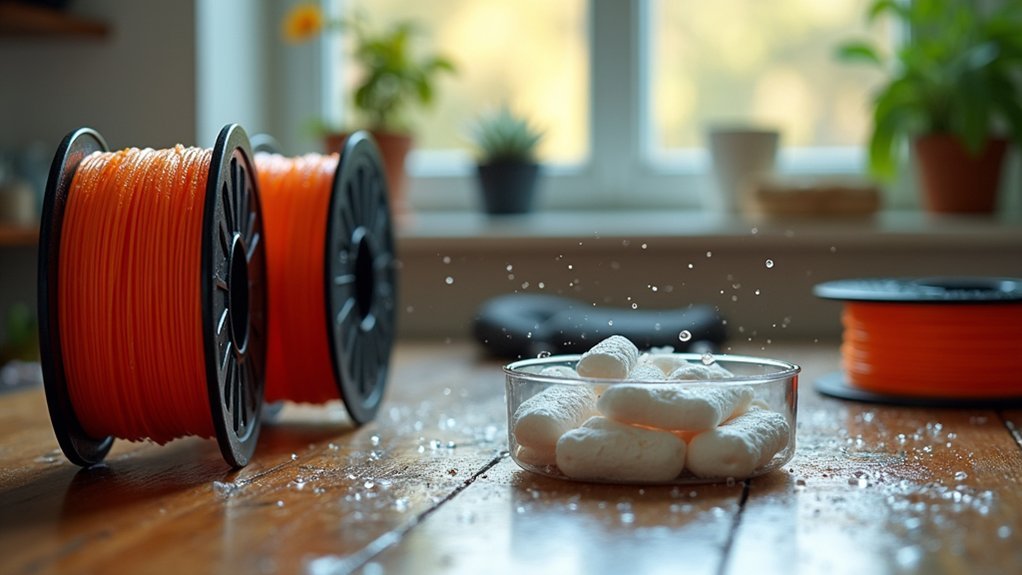
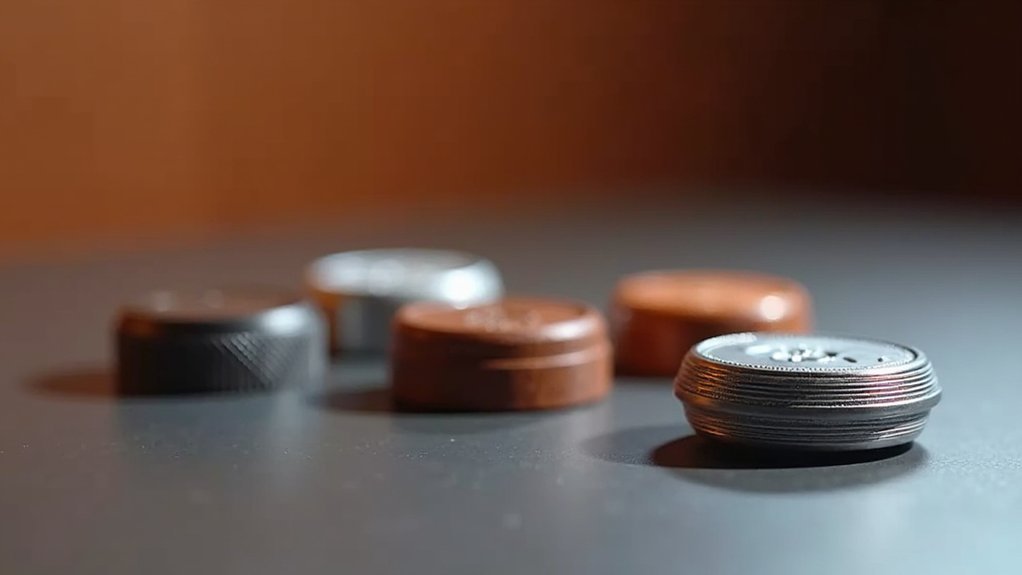
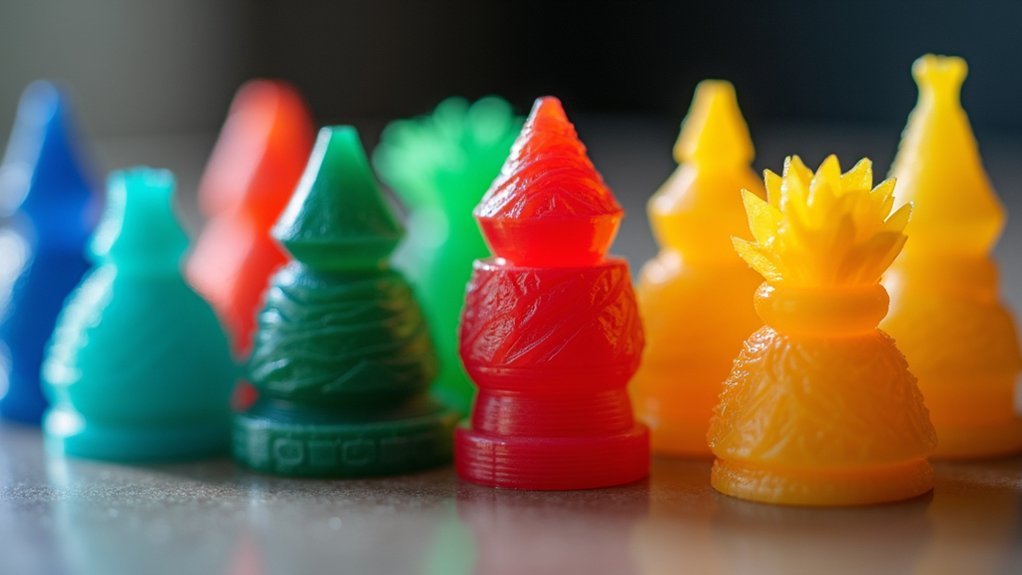
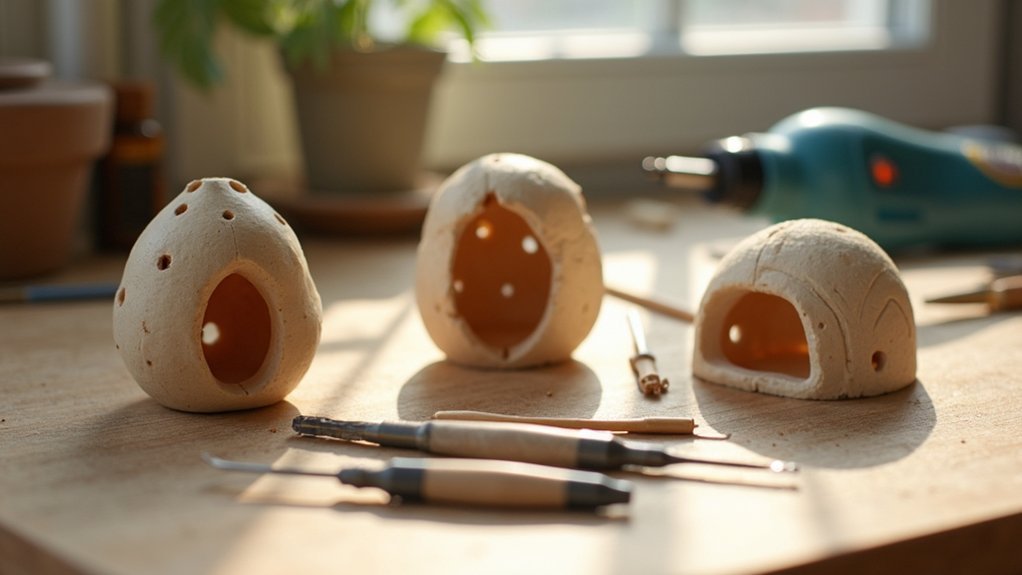
Leave a Reply